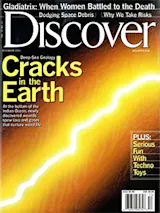As December begins, simply pointing binoculars at bright, ocher Mars places dim, lime-tinged Uranus in the same field of view. That red-and-green traffic light conjunction, low in the southwest after sunset, provides an easy way for novices to find the rarely seen Uranus. The conjunction also highlights the two most deeply tinted planets, raising an age-old question: What gives planets their distinctive colors?
Throughout most of history, celestial tints were no more than Rorschach tests of human cultures. Ancients looked at the somewhat reddish hue of Mars and saw fire or blood, leaving us with warlike Mars associations that are still evident in terms such as martial arts and court martial. By the 18th century, scientists recognized that planets shine because they reflect sunlight. As Isaac Newton had demonstrated, sunlight contains all the colors of the rainbow, which when blended together appear white to the human eye. A surface retains ...














